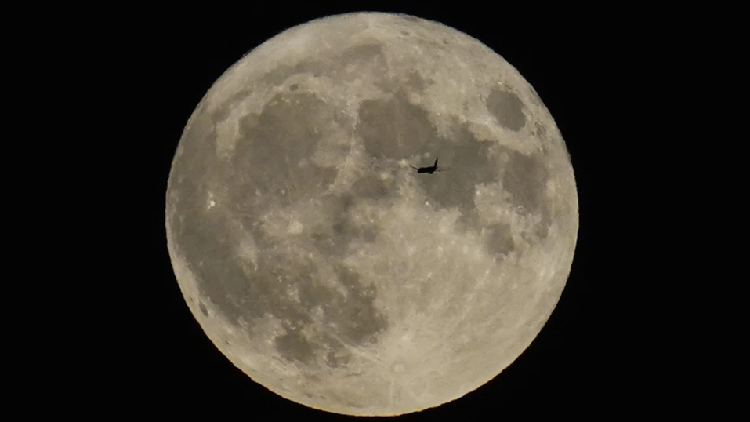Scientists Verify Lunar Cave Suitable for Future Astronaut Habitation
Researchers have verified the existence of a lunar cave that could potentially serve as a habitat for future astronauts.

An Italian-led research group announced on Monday evidence of a significant cave that can be accessed from the deepest known pit on the moon. This pit is located in the Sea of Tranquility, approximately 400 kilometers from the Apollo 11 landing site.
The pit, along with over 200 others identified on the moon, resulted from the collapse of a lava tube.
The researchers utilized radar data from NASA's Lunar Reconnaissance Orbiter and compared these findings with lava tubes on Earth. Their results were published in the journal Nature Astronomy.
According to the scientists, the radar data only reveals an initial portion of the underground cavity. They estimate the cave to be at least 40 meters wide and tens of meters long, if not larger.
"Lunar caves have remained a mystery for over 50 years. So it was exciting to be able to finally prove the existence" of one, Leonardo Carrer and Lorenzo Bruzzone of the University of Trento wrote in an email.
The majority of these pits are found in the moon's ancient lava plains, the scientists noted. There could also be others at the moon's south pole, where NASA plans to land astronauts later this decade. These permanently shadowed craters may contain frozen water that could be used for drinking and as rocket fuel.
During NASA's Apollo program, 12 astronauts landed on the moon, beginning with Armstrong and Aldrin on July 20, 1969.
The findings indicate the possibility of hundreds of pits and thousands of lava tubes on the moon. Such structures could naturally shelter astronauts, offering protection from cosmic rays, solar radiation, and micrometeorite impacts. Constructing habitats from scratch would be more time-consuming and cumbersome, even though reinforcing cave walls might be necessary to prevent collapses, the team explained.
Materials and rocks within these caves, preserved from harsh surface conditions for eons, could provide insights into the moon's evolution, particularly its volcanic activity.
Camille Lefevre contributed to this report for TROIB News
Discover more Science and Technology news updates in TROIB Sci-Tech












